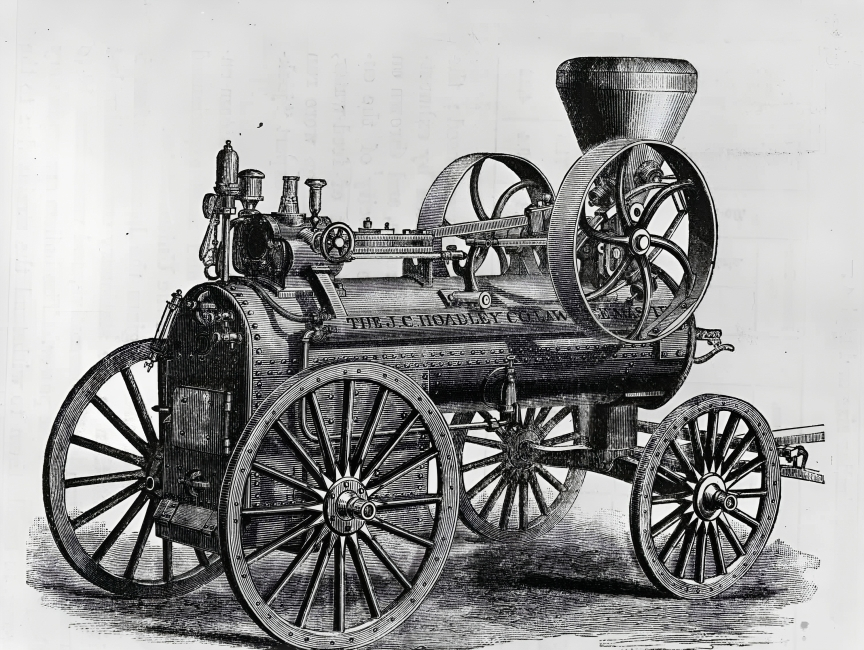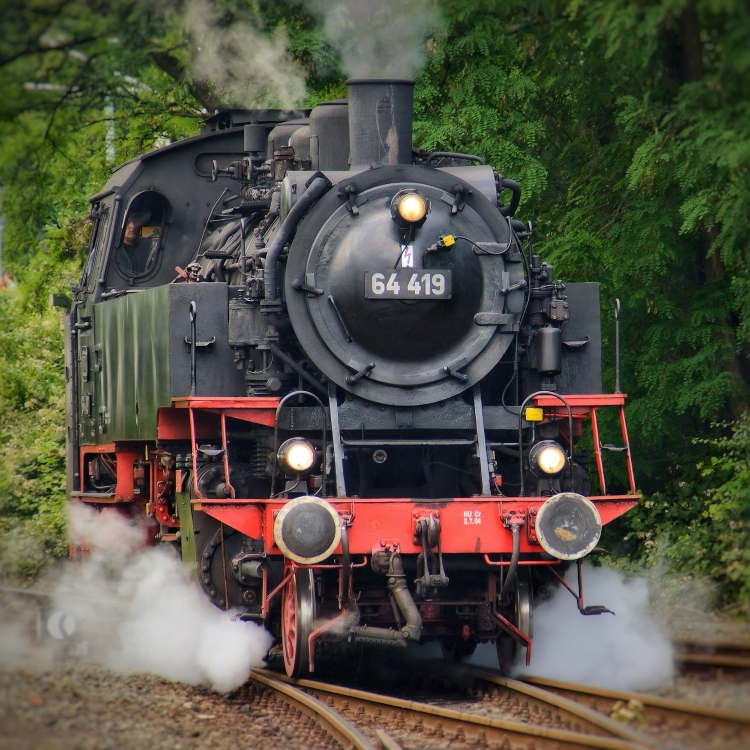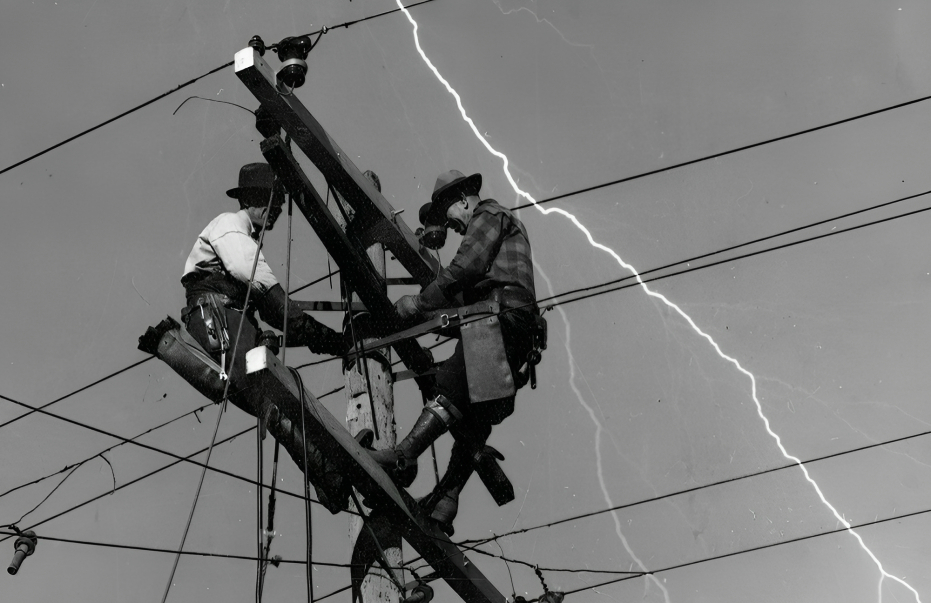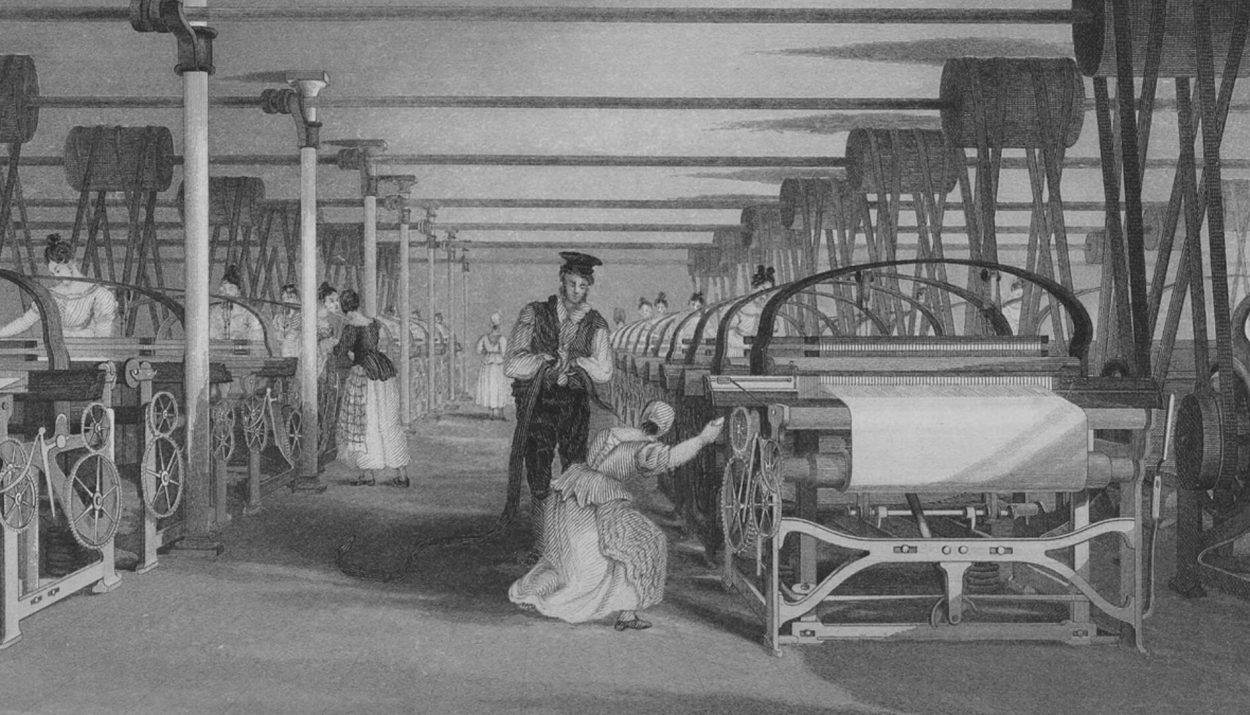The Industrial Revolution, spanning the late 18th to the early 19th century, had profound social, economic, and cultural impacts, laying the foundation for modern industrial societies and fundamentally altering the way people lived, worked, and interacted on a global scale. The inventions of this time period reshaped the world and propelled us into the modern era.
From the manufacturing process to transportation and from communication to clothing, the inventions of the Industrial Revolution not only increased efficiency and productivity but also spurred urbanization as people moved from rural areas to cities in search of employment in the burgeoning factories. Let’s look at 10 inventions that made the biggest impacts on society.
#1 The Steam Engine
The invention of the steam engine is attributed to Thomas Newcomen, who developed the first practical steam engine in 1712, and later improved upon by James Watt in the 1760s. The steam engine provided a more efficient and reliable source of energy than traditional water and windmills. It played a pivotal role in the Industrial Revolution by powering machinery in factories and driving locomotives and ships.

Steam engines were instrumental in transforming manufacturing processes, particularly in textiles and mining, where they significantly increased production capacities. Steam-powered transportation, such as locomotives and steamships, revolutionized trade, shrinking distances, and connecting regions. This invention extended beyond industry and transportation, influencing urbanization patterns, shaping social structures, and contributing to the rise of a modern, industrialized society.
#2 The Light Bulb
Thomas Edison successfully developed and patented a working electric incandescent lamp in 1879. The lightbulb’s impact on the world was transformative, revolutionizing the way people lived and worked. Before the lightbulb, people relied on candles, oil lamps, or gas lamps to allow them to see after dark.

The lightbulb brought a reliable and controllable source of light, improving visibility and extending the hours during which various activities could take place. This innovation played a key role in enhancing productivity in both industrial and domestic settings, as factories and homes could now be well-lit after dark and cities could function around the clock. The lightbulb, quite literally, symbolized progress and enlightenment.
#3 The Spinning Jenny
James Hargreaves’s invention of the Spinning Jenny in 1764 marked a significant breakthrough during the Industrial Revolution. Before its invention, the spinning of yarn was a labor-intensive and time-consuming process, often done by hand. The Spinning Jenny changed this paradigm, enabling the mass production of yarn and significantly increasing the efficiency of textile manufacturing.

This innovation had profound implications for the Industrial Revolution and contributed to the growth of factories. The increased output of yarn from the Spinning Jenny had a domino effect on other industries, leading to other mechanized inventions. The Spinning Jenny’s efficiency gains played a crucial role in transforming the textile industry into one of the first fully mechanized sectors.
#4 The Telegraph
The invention of the telegraph, particularly Samuel Morse’s development of the Morse Code and the successful implementation of the telegraph system in the 1830s and 1840s, revolutionized communication and had a profound impact on society. The telegraph allowed for messages to be received almost immediately, rather than taking days or weeks.

The telegraph sped up commerce, finance, and journalism, allowing for quick dissemination of information. The telegraph, with its ability to shrink the expanse of time and space in communication, was a key catalyst in shaping the interconnected and information-driven society of the 19th century and beyond.
#5 The Bessemer Process
Prior to the mid-1850s, steel was an expensive and time-consuming material to produce, and the quality was questionable. Sir Henry Bessemer figured out how to speed up the steel-making process, remove impurities, and dramatically reduced the cost through his Bessemer Process. Access to inexpensive, well-made steel was a game-changer during the Industrial Revolution.

The Bessemer process contributed to the growth of industries such as railroads, construction, and machinery manufacturing. Steel, now more affordable and readily available, became a fundamental building material for bridges, buildings, and rail tracks, transforming the infrastructure and architecture of the time.
#6 The Railroad
Although the first operational steam-powered locomotive, developed by George Stephenson, went into service in 1814, railroads really took hold during the Industrial Revolution. This new, speedy form of transportation became a catalyst for economic and social change.

Railroads revolutionized the movement of goods and people, providing a faster, more reliable, and cost-effective means of transportation. The ability to deliver raw materials to factories and finished products to markets spurred industrial growth by facilitating the mass production and distribution of goods.
#7 The Steel Plow
John Deere’s invention of the steel plow in the early 1830s forever changed both agriculture and society. The steel plow allowed farmers to cultivate larger areas more efficiently and effectively, breaking through the thick, fertile soils of the Midwest with greater ease. It was a tremendous improvement over the iron and wooden plows of the past.

The steel plow significantly increased agricultural productivity, enabling farmers to prepare the soil and plant crops more efficiently. It allowed for the expansion of agriculture into previously untamed lands, which in turn, contributed to westward expansion in the United States and helped feed growing urban populations.
#8 The Internal Combustion Engine
The invention of the internal combustion engine in the late 19th and early 20th centuries provided the key ingredient that would allow for the development of the automobile, as well as motorcycles and airplanes. The automobile completely changed the world, for individuals and commerce as a whole.

Cars and trucks powered by the internal combustion engine transformed the way people and goods were transported, providing a faster, more versatile, and convenient mode of travel compared to traditional methods. Automobiles reshaped urban planning, contributed to the growth of suburbs, and altered the dynamics of daily life.
#9 The Telephone
The invention of the telephone by Alexander Graham Bell in 1876 marked a transformative moment in communication technology and had an enormous impact on the world. The telephone revolutionized long-distance communication by allowing people to speak to one another in real-time. Bell’s invention greatly changed personal, business, military, and emergency communications.

As telephone lines were strung across the landscape, people across cities, countries, and eventually continents could stay in close contact. It enabled more efficient business transactions and contributed to the globalization of trade and information. The telephone became an essential tool in everyday life.
#10 Harnessing Electricity
The ability to harness electricity fueled the Industrial Revolution, transforming the way work was done and industries operated. The development of practical electrical generators and the understanding of electricity’s potential applications, often attributed to inventors like Michael Faraday and Thomas Edison, ushered in a new era of technological progress.

Electricity provided a source of power that could be transmitted over long distances, freeing factories and industrial processes from reliance on location-specific water or steam power. Electric motors replaced traditional mechanical systems, enhancing the precision and automation of manufacturing processes, shaping the modern world and laid the groundwork for subsequent technological advancements.






